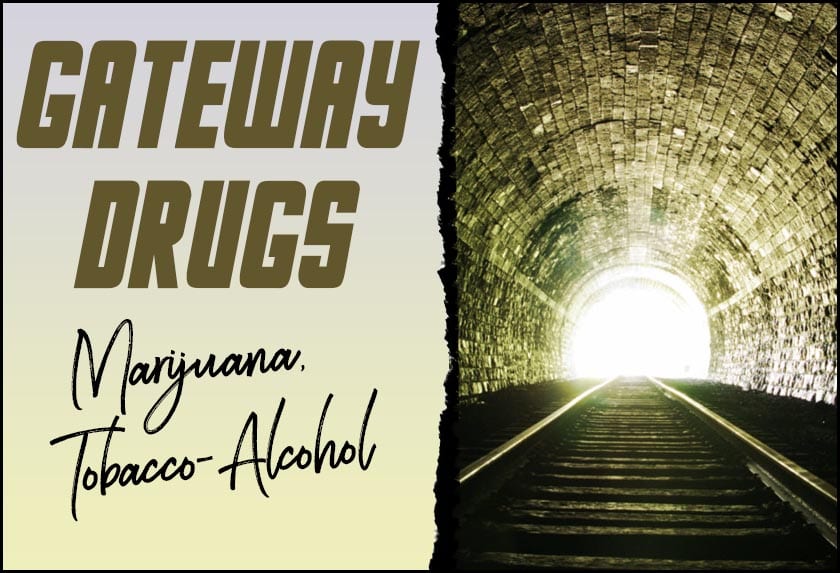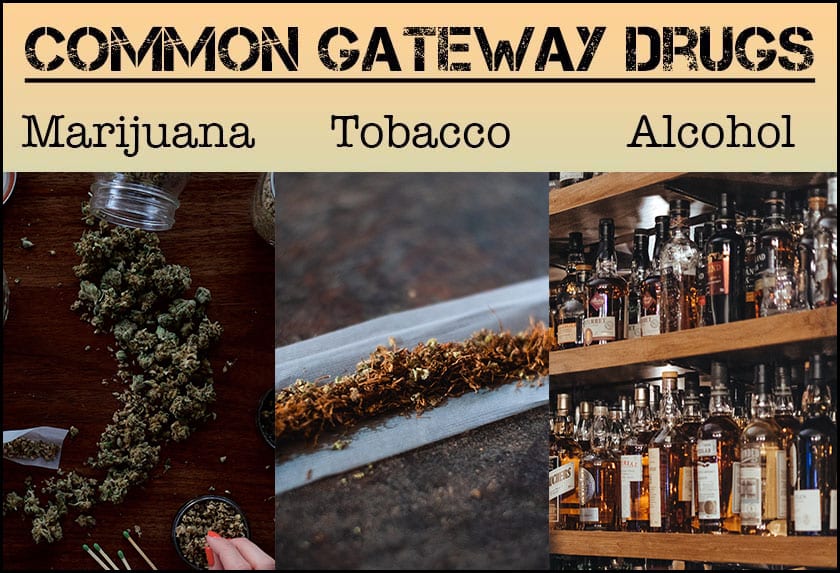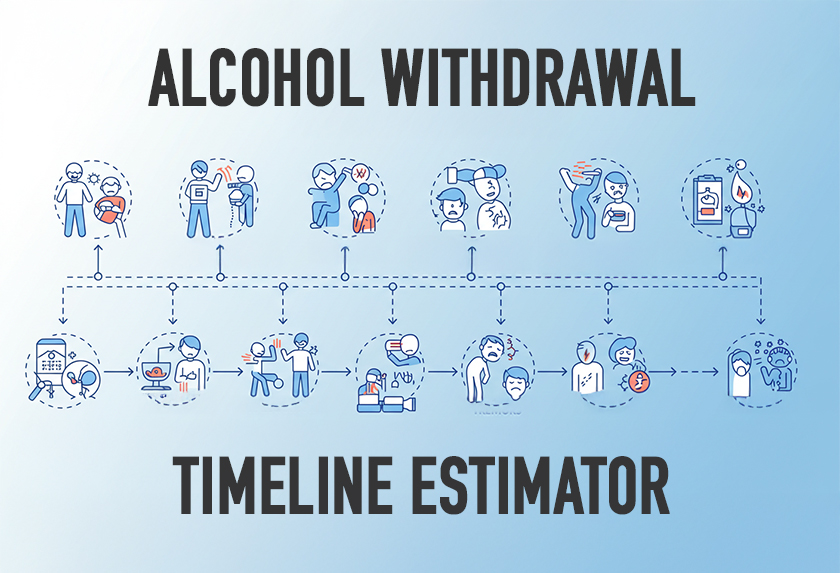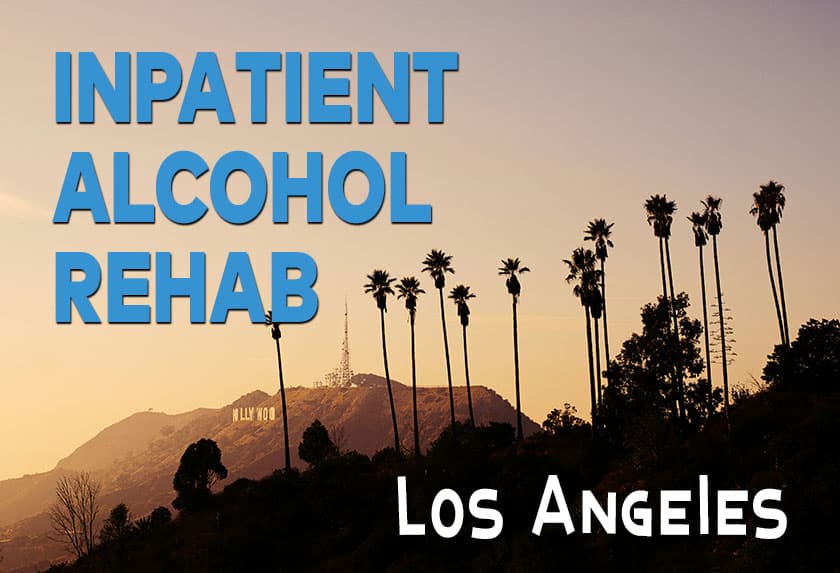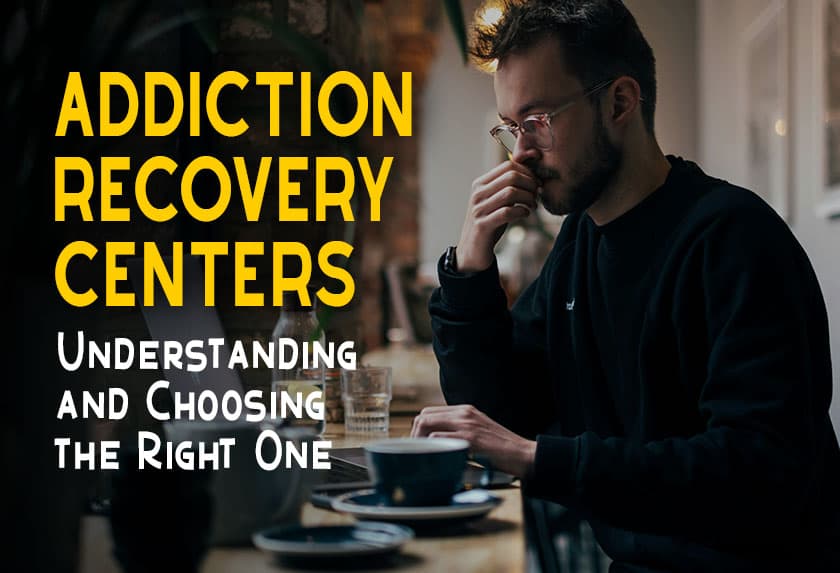People who grew up in the ‘80s and ‘90s as part of the D.A.R.E (Drug Abuse Resistance Education) generation are well aware of gateway drugs and their risks. The educational program—which was part of America’s War on Drugcampaign—taught kids and young adults that indulging in beer or marijuana increased the risk of advancing to hard drugs.
Although the D.A.R.E program has largely been discredited for its ineffectiveness, calls for “Say No to Drugs” still make headlines over 3 decades later. This—in addition to the increased legalization of marijuana and the emergence of new studies on the subject—has fueled renewed discussions into the so-called ‘gateway drugs theory’.
But what is a gateway drug? Which drugs are considered gateway drugs? And what does all this mean for concerned parents today? Read on for answers to these questions and more.
What is a Gateway Drug?
Definition of Gateway Drug: According to the Merriam-Webster dictionary, a gateway drug is “a drug (such as alcohol or marijuana) whose use is thought to lead to the use of and dependence on a harder drug (such as cocaine or heroin).” In other words, it’s a habit-forming or introductory substance that paves the way (i.e., opens the first gate) for the use of stronger and more addictive drugs.
Gateway drugs are typically easily accessible, easy-to-use, and mild substances—such as alcohol, marijuana, whippets drug and others that familiarize adolescents or young adults with the euphoric feeling of intoxication. Down the road, the users may gain confidence and seek stronger substances. This hypothesis was popularized in the ‘80s—at the peak of the War on Drugsand the ‘Just Say No’ campaign.
An Overview of the Gateway Drugs Theory
The gateway drug theory hypothesizes that young people who use any one drug are at a higher risk of using another drug than those who don’t indulge in substance abuse until adulthood. Under this hypothesis, “soft drugs” such as marijuana, alcohol, and nicotine precede the use of illicit drugs like cocaine, opioids, and methamphetamines. But how?
The theory suggests that the so-called gateway drugs boost dopamine levels in the brain—hence increase the feeling of pleasure. This boost during adolescence translates to the lower levels of dopamine release later in life. For this reason, people who use intoxicating substances early in life tend to seek stronger drugs to achieve higher levels of dopamine releases. There are also suggestions of cross-sensitization – a process whereby some substances prime the brain or heighten brain activity for a response to other drugs.
Why are Young People More Vulnerable to Addictive Substances?
Throughout the explanation of what is a gateway drug, you might have noticed a constant reference to adolescents or young people—but not adults. Why so? What makes young people more susceptible to the dangers of substance abuse? Well, this has a lot to do with the developmental changes in a young brain.
The human brain undergoes several dynamic changes until the mid-20s. In particular, regions of the brain associated with emotion, reward, risk-taking, decision-making, judgment, learning, and memory are still maturing in an adolescent. According to a study appearing in Clinical EEG and Neuroscience, this makes the brain functions in a young adult uniquely vulnerable to addictive substances.
The adolescent years are associated with the highest levels of dopamine activity in a person’s lifetime. This motivates teenagers to seek out pleasurable or rewarding experiences—including trying out drugs. Coupled with the findings that areas of the brain responsible for judgment and decision-making are still developing, young adults are likely to act on impulse without considering the possible consequences.
Controversies Surrounding the Gateway Drugs Theory
Is the gateway drugs theory valid or not? Although the idea of ‘gateway drugs’ has been a staple in the education system for years, it’s been marred in controversies. Sure, there is a large body of evidence that indicates a strong correlation between early use of certain substances and the abuse of other drugs down the road—but critics tend to point out the methodological limitations in the studies.
A good example of this hotly contested debate is seen in the controversy surrounding a 2017 study published in Science Advance. According to the Columbia University study, alcohol suppressed important genes in rats (HDAC4 and HDAC5)—which increased their susceptibility to cocaine by creating a permissive environment. The researchers also found out that rats exposed to cocaine were not more susceptible to nicotine or alcohol use. This supports the idea that some substances are more likely to ‘open the gates’ to other drugs.
However, there are arguments against such findings and conclusion, namely:
- Issues of basing human behavior on animal models: Although animal models might help hypothesize how certain behavior might occur in humans, they do not accurately generalize to people. Unlike rats and other animals used in the experiments, humans engage in complex behavioral patterns that differ from the living conditions of the animals. Studies such as the one highlighted above are therefore not conclusive.
- Ignoring the complexity of co-occurring disorders: There relationship between the use of ‘gateway drugs’ and susceptibility to more addictive substances is complex. There are a lot of possible variables that come into play—depending on the individual.
- Assuming correlation infers causation: Critics argue that most of the studies supporting the gateway drug theory look at correlations or associations—rather than a cause and effect relationship. Just because there is a correlation between the number of teenagers who experiment with nicotine and those when go on to use cocaine does not mean nicotine actually causes cocaine addiction.
Due to the controversies surrounding the ‘gateway drug theory’, it’s important to look at all the possible environmental and genetic factors that influence drug use behavior. There is credible evidence linking factors such as stigma and criminalization, mental health problems, trauma, and poverty to an increased risk of drug addiction. Gateway drugs are just one factor in the complex equation of substance use.
Thecommon liabilityor shared factors modelis often used in place of the gateway drug theory to explain the relationship between using a drug and the risk of further abuse. According to this theory, drug use increases a person’s susceptibility to any number of co-occurring mental health disorders—including the use and addiction to other drugs. People are more likely to become addicted by virtue of environmental and biological factors. This explains why a large percentage of teenagers who use gateway drugs do not advance to other drugs or become addicted.
Simply put, gateway drugs tend to precede the use of other drugs—but there’s more to substance abuse. There are several factors that increase the probability of drug addiction—and the order in which you take drugs is just one of them.
Common Gateway Drugs
Technically, any substance that increases the probability of using other drugs, is a gateway drug. This includes inhalants,anabolic steroids, ecstasy, prescription opioid painkillers, and even energy drinks. However, most research studies and anti-drug programs tend to focus on a few potential gateway drugs—namely tobacco, alcohol, and marijuana.
Is Marijuana a Gateway Drug?
Marijuana is often used as the ‘poster boy’ of gateway drugs—and for good reason. According to the World Health Organization (WHO), marijuana is by far the most abused, cultivated, and trafficked illegal drug in the world. Cannabis abuse has grown more rapidly than any other illicit drug—with over 147 million people consuming the substance annually.
In the United States, the prevalence of marijuana or hashish use is estimated to be 12.5% in young adolescents (12-17 years) and 34.8% in young adults (ages 18-25). Drawing from the high prevalence of the drug and the increasingly heated debate surrounding its legalization, questions such as “Is marijuana a gateway drug” have attracted considerable attention in the last decade. Below are some studies on the subject:
- According to the Center for Disease Control and Prevention (CDC), people who abuse marijuana “are 3 times more likely to become addicted to heroin.”
- In a New Zealand study spanning up to 25 years, the researchers monitored over 1,000 children—with the aim of examining “the associations between the frequency of cannabis use and the use of other illicit drugs.” The findings suggested a correlation between cannabis use and the increased risk of using other drugs or developing an addiction.
- In another 2015 study published in the International Journal of Drug Policy, the researcher found that cannabis preceded the use of other illicit drugs in a significant number of respondents.
- An animal study appearing in the Journal of European Neuropsychopharmacologysuggested a relationship between chronic exposure to THC—the psychoactive compound in marijuana—and “heroin-seeking” tendencies in rats.
- Findings from a 2003 study involving sets of twins showed that a twin who used marijuana as a teenager was up to 5.2 times more likely to use other drugs than the sibling who did not indulge in marijuana in the first place. However, another twin study in 2008 found that the findings of the 2003 study were only true for non-identical twins—and not identical pairs. This suggests that there are too many variables in play to make a conclusive claim for the gateway drugs theory.
It’s important to note that some of the studies highlighted above show a correlation rather than causation. This is clearly explained in Marijuana and Medicine: Assessing the Science Base by the National Academies Press, which states, “In the sense that marijuana use typically precedes rather than follows initiation into the use of other illicit drugs, it is indeed a gateway drug. However, it does not appear to be a gateway drug to the extent that it is the cause or even that it is the most significant predictor of serious drug abuse; that is, care must be taken not to attribute cause to association. The most consistent predictors of serious drug use appear to be the intensity of marijuana use and co-occurring psychiatric disorders or a family history of psychopathology.” It seems that we can neither rule out the possibility of a gateway effect nor claim it’s a conclusive theory.
Is Nicotine (Tobacco) a Gateway Drug?
Did you know that tobacco use (either smokeless or smoked) is one of the leading contributors to early mortality and noncommunicable diseases among adults? This a real source of concern considering as high as 33% of teenagers (13-15 years) currently use tobacco in some regions of the world. And according to some research studies, young adolescents who use tobacco products tend to abuse other substances such as heroin, cocaine, marijuana, and alcohol.
- Data from the CDC shows that tobacco smokers portray an increased use of illicit drugs (i.e., marijuana, cocaine, non-medical use of prescription drugs, heroin, and binge-drinking) compared to non-smokers. Again, this is not a cause-and-effect relationship—it’s a correlation.
- In a study published in the New England Journal Medicine, the researchers—including Denise Kandel, who helped coin the term ‘gateway drug’—found a link between nicotine use and cocaine addiction. They concluded that “Nicotine acts as a gateway drug and exerts a priming effect on cocaine…by means of HDAC inhibition.”
- Evidence from a 2011 animal study appearing in the Journal of Science Translational Medicineshowed that exposing mice to nicotine during their early developmental stages made them more responsive to cocaine later on.
Is Alcohol a Gateway Drug?
Alcohol is one of the most commonly abused substances by teenagers and adults in the United States. According to the 2018 National Survey on Drug Use and Health (NSDUH), over 80% of Americans aged 12+ reported consuming alcohol at one point in their lifetime. Additionally, approximately 401,000 adolescents (aged 12-17) had an alcohol use disorder. Of this number, only 5% received treatment.
As a parent, it’s normal to feel concerned over the above findings. What are the long-term effects of alcohol use on adolescents? More specifically, does the gateway theory suggest that alcohol might lead my child down a path of drug abuse? Here are some studies that highlight the relationship between alcohol use and substance disorders.
- According to the National Institute on Alcohol Abuse and Alcoholism (NIAAA), young adults (18-25 years) are more likely to develop co-occurring substance abuse disorders than older people.
- In a large study published in the Journal of School of Health, a group of researchers affiliated to the University of Florida examined data from nearly 3,000 12thgraders in the United States. They found that alcohol abuse often preceded the use of tobacco, marijuana, and other illicit substances.
- An article by the CDC claims that individuals with alcohol abuse disorder are 3x more likely to abuse heroin.
Prevention and Treatment
By understanding the consequences of gateway drugs–including marijuana, alcohol, and tobacco—parents, policymakers, community leaders, and health care professionals can enforce better measures to prevent the use of stronger drugs. Such measures should start from an early age to increase awareness among the youth
But in line with the common liability model, the initiatives should not solely focus on the substances used. It’s important to consider the overall context surrounding the behavior. This includes both environmental factors and biological factors such as underlying mental issues.
Treatment options typically depend on the specific gateway drug. There are several evidence-based protocols such as behavioral therapy and medications that are designed to help people combat addiction. Whichever treatment option is best for your child’s substance abuse disorder, they all have one primary goal—to steer drug abusers towards a more fulfilling and drug-free life. Remember, early intervention is crucial for the long-term health of adolescents and young adults.

